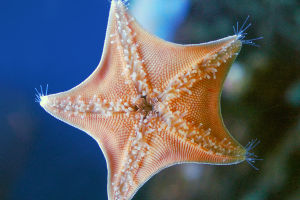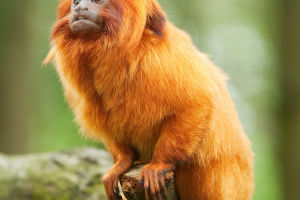We often use a big belly to describe a person who is obese and overweight, but a cat that looks like it has a big belly, is not necessarily overweight, and we may mistake the original pouch on its abdomen for a big belly.
In fact, if the cat's abdomen looks like a "meat sack" and swings from side to side as it walks, it proves that the cat is in good shape. If the cat has a rounded body, cannot see the waistline, and cannot easily press into the ribs, your cat is probably overweight.
The cat's abdominal "pouch" is a protective layer of fur, skin, and fat located in the back part of the belly, called the primitive pouch. According to Jose Alchi, president of the American Veterinary Medical Association, it is normal and healthy for cats to have a primitive pouch, and all cats, including males, have a primitive pouch.
Male and female domestic cats begin to develop a primordial pouch around 6 months of age, and because the size of the pouch varies greatly from cat to cat, some cats have a primordial pouch that is barely noticeable. The primitive pouch is most easily observed when the cat is running or tossing back and forth.
There are three main theories as to why cats have primitive pouches. The first theory is that the primitive pouch protects the internal organs, and the added layer of protection allows the feline to protect the organs within the abdomen during combat.
The second theory is that the primitive pouch allows the feline to move faster. The primitive pouch stretches as the feline runs, giving the feline extra flexibility and allowing them to travel further. These characteristics can help the feline catch prey and avoid predators.
A third theory is that the primitive pouch can be used to store energy after a large meal. In the wild, cats do not eat two hearty meals a day, and they are only likely to eat when it suits them. They may store fat from their prey in the primitive pouch to replenish their energy later.
Primordial pouches are not unique to cats; big cats such as lions and tigers also develop primordial pouches for the reasons mentioned above. It is important to identify whether your cat has a large primordial pouch or is overweight because obesity can affect your cat's health by increasing the risk of heart disease, diabetes, and high blood pressure. Being overweight can also cause arthritis and certain cancers in cats.
One way to distinguish between large primal pockets and overweight is to look at the shape of the cat, with overweight cats having rounder bodies. When viewed from the top of the cat's body, you can see the indentation in the cat's rump, which is the cat's loin.
The abdomen of an overweight cat extends all the way down from the top of the bottom, while the original pouch is located on the small abdomen and slopes toward the hind legs.
Another way to determine this is to press on the cat's rib cage. If you have to press hard to feel the cat's rib cage, this cat may be overweight. An overweight cat's abdomen will not swing like the primitive pouch when walking or running.
By tracking more than 19 million cats, researchers at the University of Guelph obtained data on trends in weight change over a cat's lifetime. The study found that male cats tended to weigh more than females, and neutered cats typically weighed more than unneutered cats.
The weight of the four most common purebred breeds of cats (Siamese, Persian, Himalayan, and Maine Coon cat) peaks at an average of 6-10 years of age, and the average domestic cat usually reaches peak weight at about 8 years of age.
Humans can assess whether they are overweight by using the BMI (Body Mass Index), but what methods are available to assess cats? Veterinarians primarily use Body Condition Scoring BCS (Body Condition Scoring) to determine a pet's nutritional status. Unlike the BMI calculation, the BCS is based on a visual and tactile assessment score.
The BCS consists of three elements. The ideal body condition for a cat is one in which the ribs can be felt but are not very visible (at least in shorthair cats) and there is a small layer of fat above the ribs. The waistline should be well-defined when viewed from the top of the cat, and the abdominal protruding primitive pouch should be visible when viewed from the side of the cat.
The commonly used BCS system has a 5-point scale and a 9-point scale, and the score form should be used to indicate the scale used when reporting. One point indicates the thinnest, and a full score indicates the fattest, with higher scores representing more fat. A score of 3/5 or 5/9 is considered the most ideal body size for a cat.
If you suspect that your cat is overweight or if you're unsure about its body condition, it's best to consult with a veterinarian. They can accurately assess your cat's weight and body condition and provide guidance on diet, exercise, and any necessary weight management plans.
Remember, maintaining a healthy weight is crucial for your cat's overall well-being and longevity. By ensuring they have a balanced diet, engaging them in regular play and exercise, and monitoring their weight and body condition, you can help your feline friend live a happy and healthy life.
So, next time you notice your cat's "big belly," take a closer look and consider whether it's a primordial pouch or a sign of being overweight. Understanding the difference will help you provide the best care for your beloved feline companion.


